
The 152 images that make up this mosaic of Belva Crater were taken by the Mastcam-Z instrument aboard NASA’s Perseverance Mars rover on April 22, 2023, the 772nd Martian day, or sol, of the mission. Belva is a 0.6-mile-wide (0.9-kilometer-wide) impact crater within the much larger Jezero Crater. Credit: NASA/JPL-Caltech/ASU/MSSS
The six-wheeled scientist encountered the crater during its latest science campaign in search of rock samples that could be brought to Earth for deeper investigation.
Perseverance’s Mastcam-Z captured 152 images of Belva Crater within Jezero Crater on Mars, revealing unique “roadcut” views of bedrock layers and potential signs of past water. The “dipping beds” may indicate a historic Martian sandbar, pointing to an ancient river that once flowed into a lake in Jezero Crater. Further study will determine if large boulders observed are exposed bedrock or remnants of this river system.
The Mastcam-Z instrument aboard NASA’s Perseverance Mars rover recently collected 152 images while looking deep into Belva Crater, a large impact crater within the far larger Jezero Crater. Stitched into a dramatic mosaic, the results are not only eye-catching, but also provide the rover’s science team some deep insights into the interior of Jezero.
“Mars rover missions usually end up exploring bedrock in small, flat exposures in the immediate workspace of the rover,” said Katie Stack Morgan, deputy project scientist of Perseverance at NASA’s Jet Propulsion Laboratory in Southern California. “That’s why our science team was so keen to image and study Belva. Impact craters can offer grand views and vertical cuts that provide important clues to the origin of these rocks with a perspective and at a scale that we don’t usually experience.”

This anaglyph of Perseverance’s mosaic of Belva Crater can best be viewed with red-blue 3D glasses. Credit: NASA/JPL-Caltech/ASU/MSSS
On Earth, geology professors often take their students to visit highway “roadcuts” – places where construction crews have sliced vertically into the rock to make way for roads – that allow them to view rock layers and other geological features not visible at the surface. On Mars, impact craters like Belva can provide a type of natural roadcut.
Signs of Past Water
Perseverance took the images of the basin on April 22 (the 772nd Martian day, or sol, of the mission) while parked just west of Belva Crater’s rim on a light-toned rocky outcrop the mission’s science team calls “Echo Creek.” Created by a meteorite impact eons ago, the approximately 0.6-mile-wide (0.9-kilometer-wide) crater reveals multiple locations of exposed bedrock as well as a region where sedimentary layers angle steeply downward.
These “dipping beds” could indicate the presence of a large Martian sandbar, made of sediment, that billions of years ago was deposited by a river channel flowing into the lake that Jezero Crater once held.
The science team suspects the large boulders in the foreground are either chunks of bedrock exposed by the meteorite impact or that they may have been transported into the crater by the river system. The scientists will search for answers by continuing to compare features found in bedrock near the rover to the larger-scale rock layers visible in the distant crater walls.
To help with those efforts, the mission also created an anaglyph, or 3D version, of the mosaic. “An anaglyph can help us visualize the geologic relationships between the crater wall outcrops,” said Stack. “But it also provides an opportunity to simply enjoy an awesome view. When I look at this mosaic through red-blue 3D glasses, I’m transported to the western rim of Belva, and I wonder what future astronauts would be thinking if they were to stand where Perseverance once stood when it took this shot.”
More About the Mission
Perseverance’s mission on Mars has a primary objective of astrobiology, which involves collecting and storing samples that may contain indications of ancient microbial life. The rover’s tasks include studying the planet’s geology and past climate, establishing a foundation for future human exploration of Mars, and pioneering the collection and storage of Martian rock and regolith.
In subsequent missions, NASA, in collaboration with ESA, plans to send spacecraft to Mars to retrieve these securely sealed samples from the Martian surface and bring them back to Earth for thorough analysis.
The Mars 2020 Perseverance mission is part of NASA’s Moon to Mars exploration strategy, which involves conducting Artemis missions to the Moon to facilitate preparations for human exploration of Mars.
JPL, managed by Caltech on behalf of NASA, was responsible for constructing and operating the Perseverance rover.

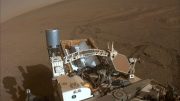

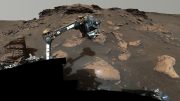

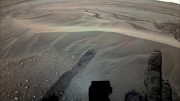
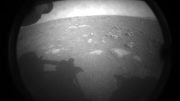
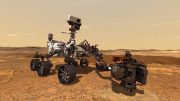
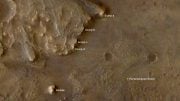
Be the first to comment on "Spectacular Mosaic of Mars’ Belva Crater Captured by NASA’s Perseverance Rover"